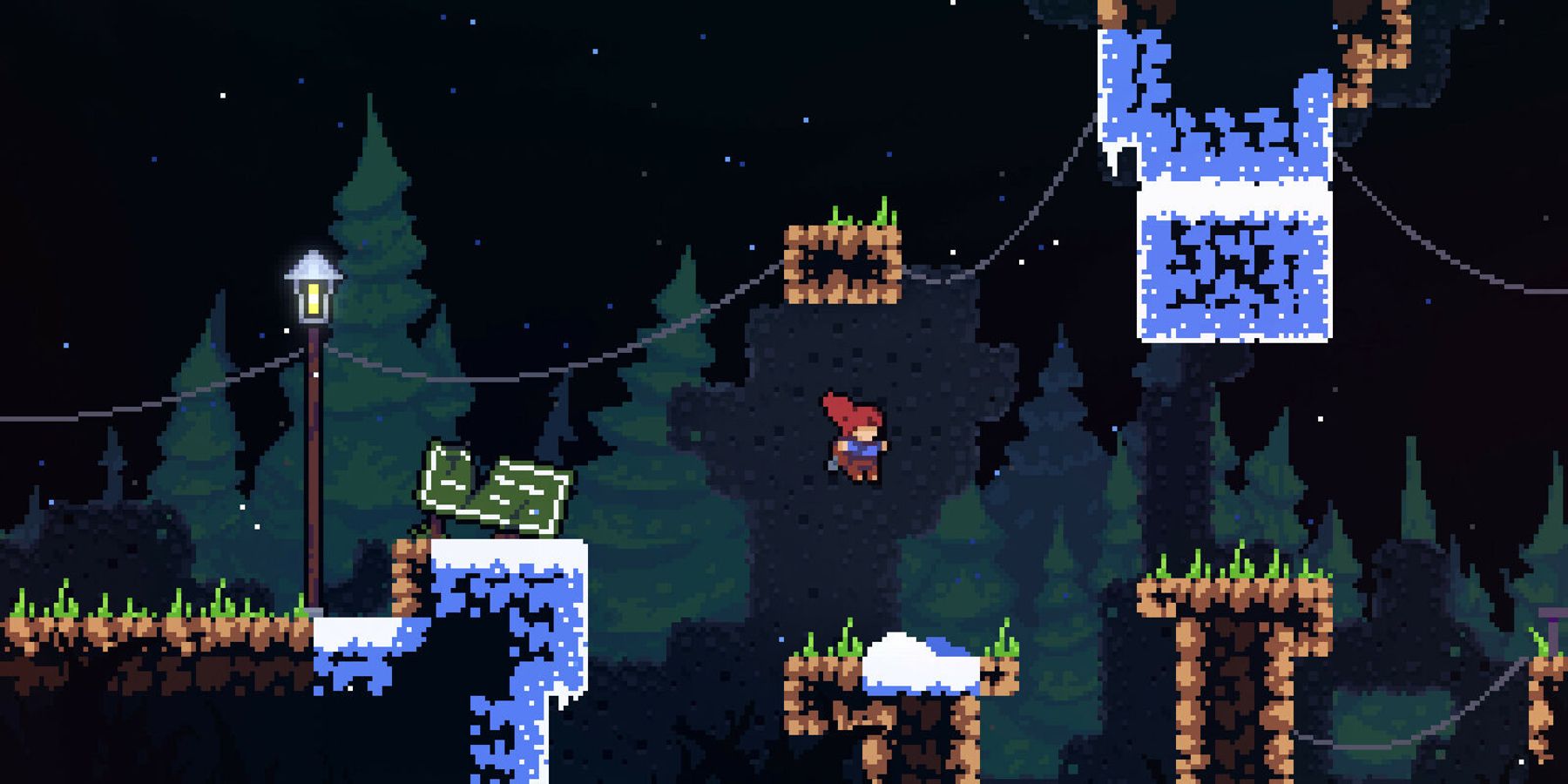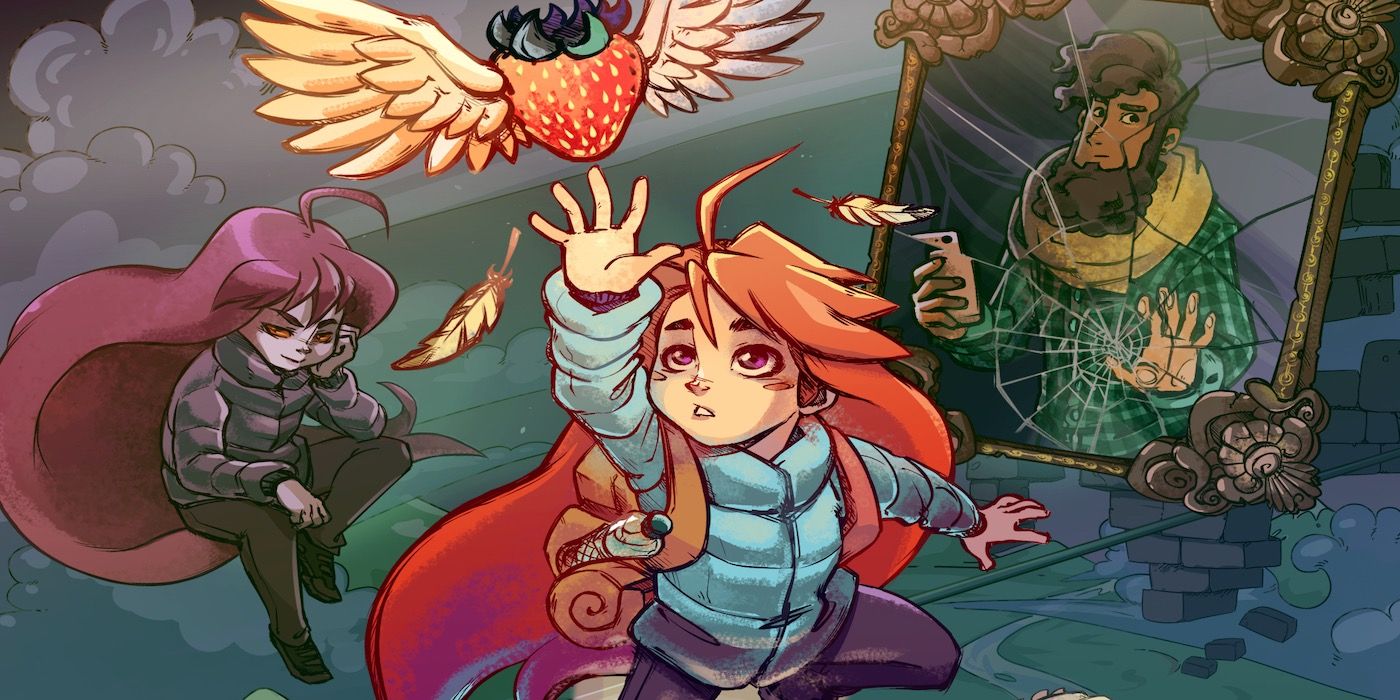One of the most successful indie games to launch in 2018 was the platformer Celeste, a game that quickly galvanized a cult following spanning casual players to veteran speedrunners. Praised critically across the board for its story, level design, and soundtrack, it just as quickly saw itself nominated and won many awards on the indie game scene, culminating in the sale of millions of copies and making it an immediate financial success. But chief among this praise and arguably one of Celeste's selling points was its commitment to tight, polished platforming and controls.
Many reviews cite Celeste's gameplay experience as smooth and precise controls as the reason why the game was so well-liked among a resurgence of classic platforming games. But while many mechanics and movement options help construct these overall controls, some taught to the player and some a by-product of coding, there's one mechanic in particular that Celeste is the perfect case study for. Despite being an unusual mechanic that defies logic, "coyote time" in Celeste, has helped the game elevate itself above others of its kind.
Coyote Time's Origin And Meaning
As strange as it sounds, the term "coyote time" actually originates from Looney Tunes' Wile E. Coyote and the Road Runner, and its connection to gaming goes beyond both characters potentially joining Multiversus. Anybody familiar with Wile E. Coyote and his antics in attempting to capture the Road Runner should know of the many instances in which, for a few seconds, he is suspended in midair and about to fall. Defying gravity for those few seconds of chuckles is exactly what "coyote time" is: a character suspended in midair despite not being on a solid platform capable of still moving and jumping.
With this in mind, it's straightforward to see how this might apply to platforming games like Celeste. Even the most experienced, capable players can still make mistakes, so when it comes to precise controls and the possible delays between pressing a button in real life to what happens on-screen, it's important to allow leeway and account for human limitations. Few things in gaming are more frustrating than timing frame-perfect platforming and button inputs, only to be off by a fraction of a second and ultimately lose. Coyote time, therefore, is a lifeline to players.
Celeste And Coyote Time
Coyote time, much like many of Celeste's hidden mechanics, might not be something the player notices right away. In fact, it's entirely possible for players to go through the game without realizing the technical enhancements that prevent Celeste from becoming a punishingly difficult platformer. After all, Celeste limits its coyote time to just five frames once the player has left a platform, so it can be difficult to immediately spot. But much like being able to reset the players' dashes between screen transitions, it's not explicitly taught to the player and is just one of several mechanics working behind the scenes to keep the gameplay experience going.
As Celeste appears to reward players' intuitive thinking and responsiveness over perfecting their ability to control Madeline, mechanics like coyote time are a means of accounting for human error and ensuring that players are not deterred or frustrated in the face of loss. They likely would have already failed several times throughout the game in attempting to master certain moves or traverse Celeste's hardest levels, so coyote time preserves some of Celeste's difficulty while subtly helping players succeed.
A parallel to this would be the gaming community's response to titles like Dark Souls or Hollow Knight, games that are widely renowned despite being uniquely challenging games. Celeste is comparable to these, given that its own controls and movement mechanics have been carefully considered and constructed to ensure the best gameplay experience can be had. While there a possible sequel to Celeste might not be in the works at this time, its small team of developers could evidently succeed with future projects due to its attention to detail and commitment to protecting player experiences.
Celeste is available now for PC, PS4, Stadia, Switch, and Xbox One.



